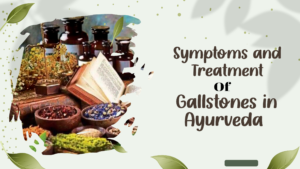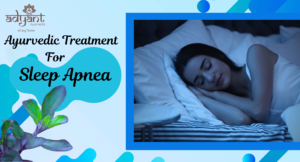
Table of Contents
ToggleDefinition of Vamana Karma
Vamana treatment or Vamana Karma is one of the five principal detoxification therapies in Ayurveda under the umbrella of Panchakarma. It specifically aims to expel the aggravated Kapha dosha from the body through the upper gastrointestinal tract, i.e., by inducing controlled therapeutic emesis.
“Kapha utsarga vasanta ritu” – Charaka Samhita, Sutra Sthana 6/43
(Kapha is naturally aggravated and ready for elimination in spring)
Translation: The elimination of doshas through the upward route (mouth) is known as Vamana Karma.
Translation: Vasanta Ritu is ideal for Vamana
This classical definition emphasizes that Vamana is a targeted detoxification method focused on removing Kapha-related toxins, thereby restoring doshic balance, improving digestion (Agni), and preventing diseases.
For Free Consultation, Download Our App “Ayurcare“
Concept of Vamana Therapy in Ayurveda
Ayurveda is a life science focused on both preventive and curative aspects. Health is defined as a balance of doshas and dhatus. Vamana treatment is a Panchakarma treatment, designed to treat and prevent Kapha-related disorders by eliminating the root cause through emesis.
Types of Vamana – Classical Classifications
| Type | Use Case | Description |
|---|---|---|
| Sadyo Vamana | Emergency cases | Done immediately in acute situations like poisoning or indigestion, without preparatory steps. |
| Vasantika Vamana | Seasonal (Spring) | Annual purification in Vasanta Ritu for Kapha elimination. Prevents seasonal allergies and respiratory issues. |
| Kramataha Vamana | Planned approach | Gradual detox over days/weeks; for weak patients or those intolerant to intense therapy. |
| Punaha Punaha Vamana | Chronic conditions | Repeated Vamana sessions for chronic Kapha disorders like asthma or psoriasis. |
| Ghreya Vamana | Nasal stimulation | Gentle Vamana via the nasal route for mild detox. Useful in psychosomatic cases. |
| Nitya Vamana | Chronic Kapha ama | Daily mild Vamana for long-term conditions like sinusitis or asthma. |
Difference Between Classical Vamana & Sadyo Vamana
| Feature | Classical Vamana | Sadyo Vamana |
|---|---|---|
| Purpose | Shodhana (deep purification) | Shamana (emergency management) |
| Duration | 7–14 days | 1 day |
| Pre-Treatment | Pachana, Snehapana, Swedana | Usually skipped |
| Detox Depth | Deep tissues (Dhatu level) | Primarily Ama elimination |
| Used In | Chronic Kapha disorders | Indigestion, poisoning, mild ama |
Why Vamana is a Cornerstone of Panchakarma
Complete Detoxification: Removes toxins from the stomach and lungs.
Dosha Balance: Primarily reduces Kapha; helps balance all doshas.
Immunity Booster: Improves Agni and strengthens immunity.
Prevention & Cure: Prevents recurrence of Kapha-related diseases.
Importance of Vamana Before Virechana
“Urdhva margena Kapha, Adho margena Pitta”
Eliminates Kapha before purging Pitta.
Ensures better results and prevents complications like mucous diarrhea or vomiting of virechana medicine.
Indications of Vamana Karma
Classical Indications:
Unmada (Psychosis)
Apasmara (Epilepsy)
Adhoga Raktapitta (Lower GI bleeding)
Ajeerna (Indigestion)
Visuchika (GI distress)
Gara Visha (Chronic poisoning)
Navajwara (Early fevers)
Hrullasa, Avipaka (Nausea, indigestion)
Kaphaja Kasa (chronic wet cough)
Kaphaja Shwasa (obstructive airway disease)
Staphylococcal skin infections
Premenstrual symptoms in Kapha-dominant PCOS
Ama Vata (early-stage Rheumatoid arthritis with Kapha signs)
Migraine (Kapha-Pitta type, with heaviness and nausea)
Modern Clinical Indications:
Sinusitis, Rhinitis
Hypothyroidism (Kapha type)
Migraine (Kapha-Pitta type)
Historical and Scriptural Context
Charaka Samhita recommends Vamana in Vasant Ritu (spring).
Sushruta Samhita supports its use in respiratory and digestive diseases.
Seen as the first among Panchakarma procedures.
Procedure of Vamana at Adyant Ayurveda
Preparation Before Vamana
Pachana: Digestive herbs to remove ama.
Snehana: Medicated ghee/oil to mobilize toxins.
Swedana: Steam to liquefy Kapha.
Diet: Milk, urad dal, sweets to enhance Kapha.
Procedure of Vamana Karma
Day of Procedure: Morning, empty stomach.
Administer Vamana Dravyas (e.g., Madanaphala) with kashaya/milk.
Monitor carefully till Pittanta Vamana (bile appears).
Post-therapy rest and warm water bath.
Types of Administration
Sadyo Vamana: Instant emesis for emergencies.
Classical Vamana:
Pre-preparation: Pachana, Snehapana
Internal/External Oleation
Abhyanga + Swedana
Diet + Induction of Vamana
Post-Vamana Care
Samsarjana Krama:
Gradual reintroduction of food (Kanji to solid diet).
Enhances digestion and prevents relapse.
Lifestyle Advice:
Rest, meditation, light diet.
Avoid cold, heavy, spicy food.
Ideal Diet During Samsarjana Krama (Post-Vamana)
| Stage | Diet Recommendation |
|---|---|
| Day 1–2 | Peya (rice gruel) – thin, soupy |
| Day 3–4 | Vilepi – thicker rice gruel |
| Day 5–6 | Akrita Yusha – boiled moong dal without spices |
| Day 7+ | Kritha Yusha + Soft rice – light, spiced lentils and rice |
Avoid:
Dairy, wheat, cold foods, sour or spicy items
Heavy proteins and raw vegetables for a week
Dosha Perspective
Kapha: Directly expelled
Pitta: Balanced via stronger Agni
Vata: Stabilized by toxin elimination
Contraindications of Vamana
| Category | Examples |
| Age | Children <12, Elderly >55 |
| Weak Individuals | Emaciated, injured, delicate, fatigued |
| Diseases | Heart disease, ulcers, hypertension, pregnancy, bleeding disorders |
| Post-therapy | After recent basti/virechana or surgery |
Avoid Vamana in weak Agni or Bala conditions
Seasonal Recommendation
Vasanta Ritu (Spring): Natural Kapha aggravation occurs. Best time for Vamana.
“Kapha utsarga vasanta ritu” – Charaka Samhita, Sutra Sthana 6/43
(Kapha is naturally aggravated and ready for elimination in spring)
Effectiveness of Vamana
Improves Digestion: Enhances nutrient absorption.
Supports Respiratory Health: Clears Kapha from lungs.
Boosts Immunity: Purifies Srotas and enhances vitality.
Samyak Lakshana – Signs of Proper Vamana (Clinical Endpoints)
The effectiveness of Vamana is judged not just by how much is vomited but by how well the body and doshas are balanced afterward.
| Sign | Description |
|---|---|
| Pittanta Vamana | Bile seen in vomitus indicates complete Kapha elimination |
| Udaralaghava | Feeling of lightness in the abdomen |
| Indriya Prasannata | Clarity and brightness of senses |
| Agni Deepti | Increase in digestive fire (hunger returns) |
| Manahsaukhyam | Mental calmness and clarity |
These signs are Samyak Vamana Lakshanas mentioned in Charaka Samhita, indicating successful detoxification.
Case Study: Vamana in Chronic Asthma at Adyant Ayurveda
Patient: 42-year-old with chronic asthma for 10 years.
Symptoms: Wheezing, mucus, breathlessness
Ayurvedic Diagnosis:
Kapha imbalance + Ama
Treatment Plan:
Pachana with Trikatu Churna
Snehana + Abhyanga
Swedana
Vamana using Madanaphala
Post-care with Samsarjana and dietary advice
Outcome:
Fewer asthma attacks
Reduced medication
Improved lung capacity
Why Choose Adyant Ayurveda for Vamana Therapy?
Expert Ayurvedic Practitioners
- 25 years of Exteris in Panchakarma
Authentic Classical Procedures
Modern, Hygienic Facilities
4 Locations in Bangalore:
Jayanagar
Indiranagar
Kalyan Nagar
Rajarajeshwari Nagar
Read More:
Conclusion: Vamana therapy is a foundational Ayurvedic detox method, effective for both disease management and health preservation. When performed properly under guidance, it offers profound rejuvenation and disease prevention benefits.
FAQs Related to Vamana Treatment in Ayurveda
What is Vamana treatment in Ayurveda?
Vamana is one of the five Panchakarma therapies aimed at cleansing the body. It involves therapeutic vomiting to expel aggravated Kapha dosha and toxins from the upper gastrointestinal tract. It is a scientifically monitored detox procedure performed under the guidance of an Ayurvedic doctor.
Who is eligible for Vamana therapy?
Individuals with Kapha-dominant disorders like asthma, bronchitis, obesity, PCOS, skin diseases (psoriasis, vitiligo), chronic allergies, and digestive issues are suitable candidates. It is also recommended as a preventive detox in spring (Vasanta Ritu) for healthy individuals with Kapha prakriti.
How many days does the Vamana treatment take?
Classical Vamana: 7–14 days including preparation, procedure, and recovery (Samsarjana Krama).
Sadyo Vamana: 1-day version used in emergency cases like food poisoning or indigestion.
Is Vamana painful or difficult to undergo?
Vamana is a safe and well-tolerated procedure when done under medical supervision. It may cause temporary nausea or fatigue during the emesis process, but these effects are closely monitored and managed by the doctor.
Can Vamana be done at home?
No. Vamana is a clinical procedure that requires medical expertise, emergency readiness, sterile conditions, and post-therapy monitoring. Self-inducing vomiting can be dangerous and should be strictly avoided.
What should I eat before and after Vamana therapy?
Before: Follow a prescribed Kapha-increasing diet (milk, urad dal, sweets) the day before the procedure.
After: Begin with liquid gruels (kanji) and gradually progress to solid foods as per Samsarjana Krama over 3–7 days.
What are the signs of successful Vamana (Samyak Vamana)?
Signs include:
- Appearance of bile (Pittanta Vamana) in vomit
- Lightness in the abdomen
- Return of hunger and energy (Agni Deepana)
- Clarity of senses (Indriya Prasannata)
- Calmness of mind (Manah Shanti)
Are there any side effects of Vamana treatment?
When done properly, side effects are minimal. Some individuals may feel temporary
- Dizziness
- Fatigue
- Slight dehydration
- Loose stools
These are normal and subside with rest and dietary care.
Can Vamana be done in any season?
While it can be done when indicated, spring (Vasanta Ritu) is the ideal season for Vamana, as Kapha naturally aggravates during this time and can be eliminated effectively.
Can healthy individuals also take Vamana therapy?
Yes. Ayurveda recommends Vamana annually in healthy Kapha-predominant individuals as a preventive wellness measure to enhance digestion, immunity, and mental clarity.





